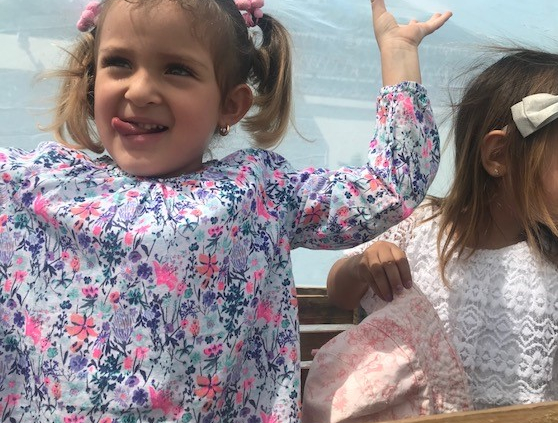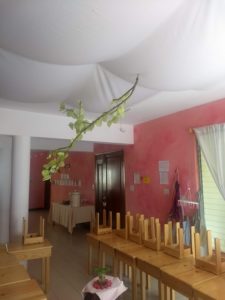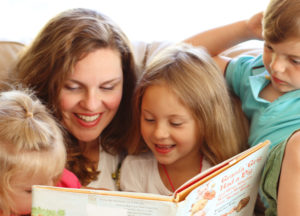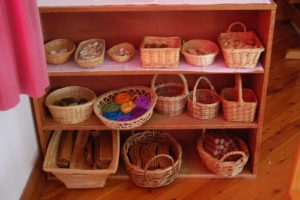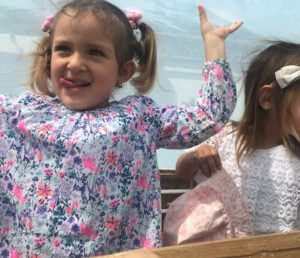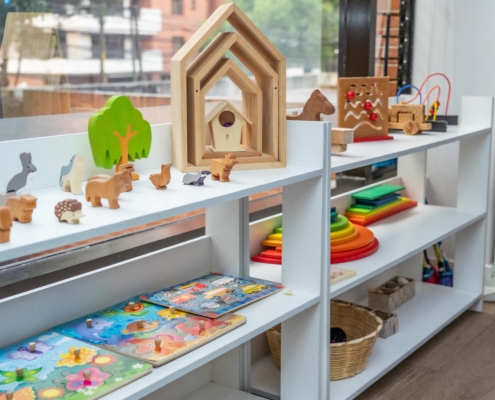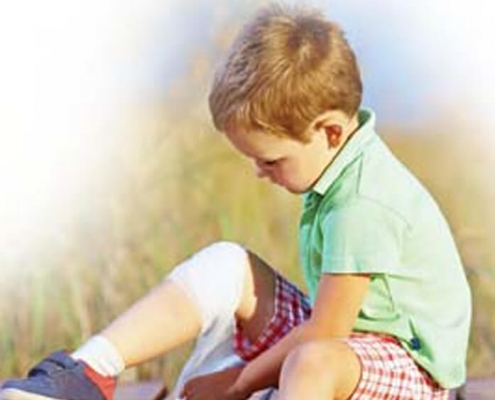Creating Spaces for Children: cycles of life
Written by Chantal Kovash, Trinus teacher
In creating spaces for children, let us bring nature as close to the children as possible! A Waldorf lifestyle is defined as low-tech and chemical free household environment, eating healthy, organic-when-possible food, being close to healthy rhythms i.e. sleep, outdoor exercise, dressing in natural, breathable fibers, playing with natural materials and being as close to nature, and its seasonal rhythms, as possible. This is not always easy when we live in the city, so we bring nature into our classroom and into our homes!
Imagine a playroom or bedroom with a couple of branches hanging from the ceiling to create the feeling of sitting under a tree. Tree branches add a natural, dimensional element and a place to hang wonderful objects from- a mobile can be created by hanging leaves, shells or fairies from hanging branches. Wood toys are emphasized in a natural setting for the child: wooden building blocks, wooden dolls, beds and furniture, small houses or castles.
Creating spaces for children means creating time and space in our lives to be with children. How priceless to be with your child in a beautiful creative space making art, reading or playing house. Making a cozy reading nook or book environment inspires children to explore the ‘habits’ of reading- a child learns to hold a book and enjoying the beauty of the illustrations, turning the page and entering the universe of the story.
Even the youngest child appreciates the freedom of picking up a book at the time of their choosing or memorizing a favorite story, especially with the guidance of an older reader. Reading is one of the child’s first imitative behaviors and can instill a lifetime of book loving, which in turn supports strong literacy skills.
A good work table or desk in your child’s room, at their height, where they can draw or paint or sculpt, sitting or standing, creates opportunities for artistic creation. If you have prepared the work area with a painter’s ground cover (industrial canvas) to protect a carpet, then a little mess is acceptable and represents the child’s creative freedom.
Children (and adults alike) benefit from standing at their table while they do their work! Although there is potential for mess if art supplies are within easy access, even the very smallest child will quickly learn to feel “ownership” of their space and take care of their art supplies properly. Small jars of just an inch of watercolor paint and water can be kept fresh for a week or two with a lid on them.
If children are shown how to take care of their brushes, they will soon become confident with painting and themselves as artists. Be sure to have a painter’s rag (dry and wet) available. Easily accessible should also be paper and good quality beeswax block crayons (for the very young) and bigger ‘stick’ crayons for 4 years and up. Don’t forget to show your child how to wear an apron when they paint or work with clay.
Another ‘space’ easily created for children is a small (1’x 1’) rice or sand box with a few pouring containers, a small cup, small jars, a spoon and fork. Model first for your child how to keep the rice (or sand) in the box as they pour and scoop. These can be brought out and put away easily and are ideal for fine motor practice and little hand dexterity. A rice or sand box is a calm activity and supports concentration and thoughtful, practical activity.
Do you remember being a child and how many hours of imaginative fun you spent using blankets to make forts? My brother and I would spend all our Saturday mornings, while our parents slept in, creating spaces under blankets that we hung between the couch and chairs.
Give your children light, beautiful cloth to hang and hide under – they will bring hours of joy in a child’s creative space. In our class, we play the “guess who is under the cloth?” game, outside we have a long piece of cloth for laying on the small slope to slip and slide down, or I will “put the children to sleep” under a cloth for a moment of breath and repose.
Extra big, sturdy child friendly wooden clips are available online to assist children in their fun with cloth projects. Any breathable material that children can tie around themselves, as in a dress up cape or skirt, or put dolls or animals to bed with, will do. Early childhood classrooms traditionally have ‘silks’ for children to play with. Rudolf Steiner, the founder of Waldorf, said that play is the young child’s work.
The simpler the material, the better for children to imagine what “is”. The child’s imagination is much more lenient than the preconceptions of the greater culture or Disney, and oh, so forgiving, and oh, so much more creative.
In creating spaces for children, consider getting rid of plastic toys and play materials. Plastic is the ruin of our environment and by limiting our use of it, we are modeling for our children our care and concern for the earth, not to mention that the byproducts and microscopic particles of plastic are showing up in children’s bodies from bottled water and toys.
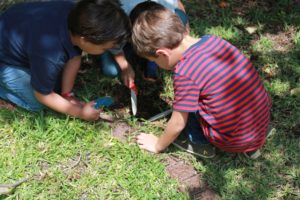
Nature rarely disappoints us. It may change shape or color with each passing season, but it never fails to consistently reveal the simple and deeper meanings of life and through it we explore our head, heart and hands. In creating spaces for children, we are creating space for beginnings and sometimes, endings, as in calling a painting finished or in observing the transformation of a flower blossom. We create spaces in the material and spiritual realms for children and recognize nature as guide and teacher.

